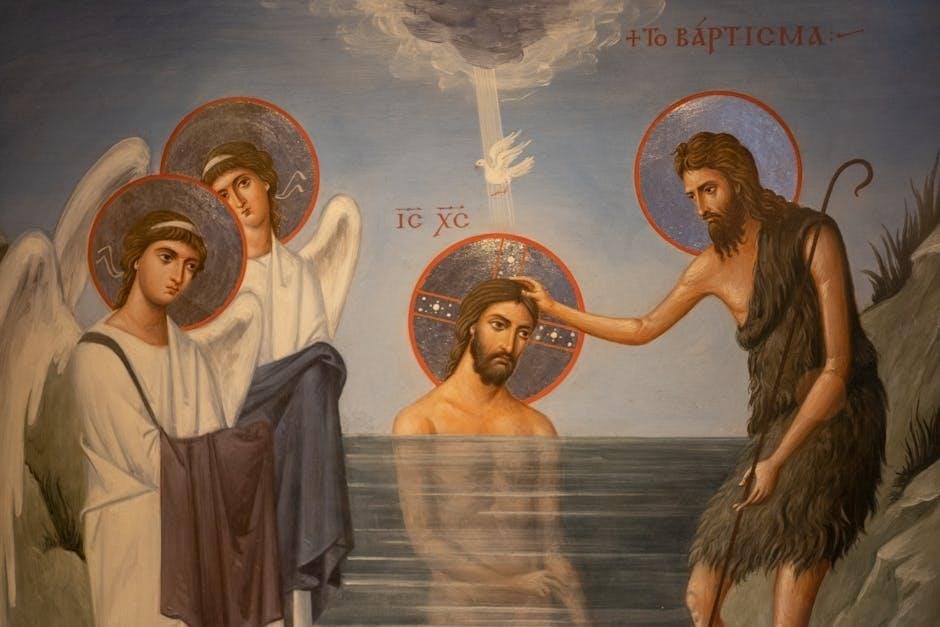
Handel’s Messiah, composed in 1741, is a revered oratorio premiered in Dublin in 1742․ Its grandeur and spiritual depth make it a cornerstone of classical music, often performed during Christmas and Easter․ The Messiah PDF score is widely available for study, showcasing Handel’s masterful composition and enduring legacy․
1․1 Overview of the Messiah
Handel’s Messiah, composed in 1741, is a monumental oratorio that premiered in Dublin in 1742․ It stands as a cornerstone of Western classical music, traditionally performed during Christmas and Easter․ The work is structured in three parts, exploring the prophecy, life, and resurrection of Jesus Christ․ Notable sections include the iconic Hallelujah Chorus․ The Messiah PDF is widely available, offering insights into Handel’s masterful composition․ It remains a central piece in choral repertoire, celebrated for its emotional depth and grandeur, making it a timeless work in musical heritage․
1․2 Historical Background
Composed by George Frideric Handel in 1741, Messiah was first performed in Dublin in 1742․ The libretto, compiled by Charles Jennens, draws from biblical texts․ Initially, the oratorio received modest acclaim but soon gained popularity, becoming a cornerstone of Western music․ Its enduring appeal lies in its emotional and spiritual resonance, resonating across cultures and centuries․ The Messiah PDF provides access to the score, enabling scholars and musicians to explore its historical significance and musical brilliance, ensuring its legacy as a timeless masterpiece․
1․3 Composition and Premiere
Handel composed Messiah in just 24 days, from August 22 to September 14, 1741․ The premiere took place on April 13, 1742, in Dublin, Ireland, at the New Music Hall․ The oratorio was initially met with modest success but later became a beloved masterpiece․ Its composition featured innovative use of orchestration, blending trumpets and drums to create a grand sound․ The Messiah PDF score reveals Handel’s meticulous craftsmanship, offering insights into his creative process․ The premiere marked the beginning of its enduring legacy, solidifying its place as a cornerstone of classical music and a cherished tradition during festive seasons․

Historical Context of the Messiah
Composed in 1741 by Handel with libretto by Charles Jennens, Messiah premiered in Dublin in 1742․ It became a cornerstone of Western sacred music, often performed at Christmas and Easter, with its PDF score widely available for study and appreciation․
2․1 Handel’s Inspiration and Creative Process
Handel’s inspiration for Messiah stemmed from religious texts compiled by Charles Jennens, focusing on the life of Jesus Christ․ Composed in just 24 days, the oratorio reflects Handel’s deep spirituality and mastery of choral music․ His creative process involved blending biblical narratives with powerful orchestration, including innovative use of trumpets and drums․ The PDF score reveals his meticulous attention to detail, with dramatic contrasts between solos and choruses․ This work, often performed during Christmas and Easter, remains a testament to Handel’s genius and his ability to evoke profound emotional and religious resonance through music․
2․2 The Role of Charles Jennens in the Libretto
Charles Jennens, a wealthy landowner and literary scholar, played a pivotal role in shaping Messiah by compiling its libretto from biblical texts․ His selection of scriptures focused on the life, death, and resurrection of Jesus Christ, providing a cohesive narrative for Handel’s composition․ Jennens’ work ensured the oratorio’s theological depth and emotional impact, aligning with Handel’s musical genius․ The PDF libretto highlights Jennens’ meticulous arrangement, blending Old and New Testament passages to create a powerful spiritual journey․ His collaboration with Handel was instrumental in making Messiah a timeless masterpiece, celebrated for both its religious significance and artistic brilliance․
2․3 Initial Reception and Popularity
Handel’s Messiah premiered in Dublin in 1742 to a modest yet positive reception․ Despite initial skepticism, the oratorio gradually gained popularity, becoming a beloved choral work․ Its emotional depth and spiritual themes resonated deeply with audiences․ Over time, Messiah became synonymous with Christmas and Easter celebrations, particularly in Anglo-Saxon countries․ The Messiah PDF score reflects its enduring appeal, as it remains one of the most performed and admired works in classical music․ Its universal themes and Handel’s masterful composition ensured its rise to fame, making it a cornerstone of musical tradition․
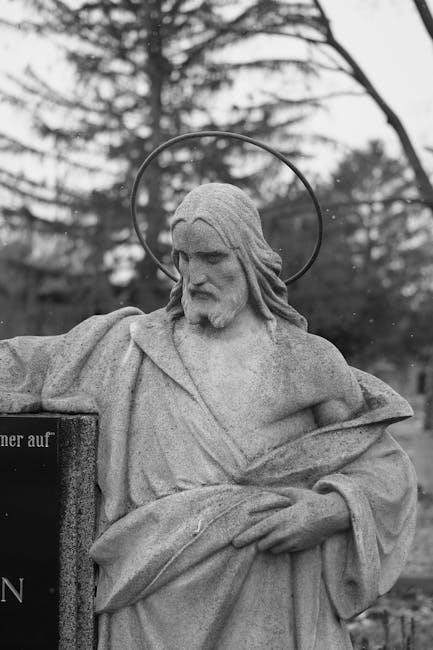
Structure of the Messiah
Handel’s Messiah is structured into three distinct parts, reflecting the narrative of Jesus Christ’s life, from prophecy to resurrection․ The oratorio typically lasts around two and a half hours, blending recitatives, arias, and grand choruses into a cohesive spiritual journey․
3․1 Three Parts of the Oratorio
Handel’s Messiah is divided into three parts, each representing a distinct phase in the narrative of Jesus Christ․ The first part focuses on the prophecy and birth of the Messiah, incorporating passages from Isaiah and other Old Testament texts․ The second part depicts Christ’s passion, death, and resurrection, drawing from the Gospels and Psalms․ The third part explores themes of resurrection and eternal redemption, culminating in the triumphant Hallelujah Chorus․ This structure not only provides a theological framework but also showcases Handel’s mastery in weaving diverse scriptural texts into a unified musical narrative․
3․2 Key Sections and Movements
Handel’s Messiah features a rich tapestry of arias, choruses, and instrumental sections that underscore its dramatic and theological narrative․ Notable movements include the tenor aria “Comfort Ye” and the bass aria “The Trumpet Shall Sound,” both showcasing vocal virtuosity․ The “Hallelujah Chorus,” a triumphant conclusion to Part II, is one of the most recognizable pieces in classical music․ Instrumental interludes, such as the “Pastoral Symphony,” evoke the nativity scene with gentle, rustic tones․ These key sections highlight Handel’s ability to blend solo and choral elements with orchestral brilliance, creating a work that is both spiritually profound and musically electrifying․ The Messiah PDF reveals intricate details of these movements, essential for performers and scholars alike․
3․3 The Significance of the Hallelujah Chorus
The “Hallelujah Chorus” stands as the iconic conclusion to Part II of Handel’s Messiah, celebrated for its triumphant celebration of Christ’s reign․ Its grand orchestration and choral brilliance make it a defining moment in the oratorio․ Traditionally, audiences rise during its performance, a custom believed to have originated when King George II was so moved that he stood, prompting the entire audience to follow․ Theologically, it proclaims the divine glory and redemption through Christ, resonating deeply with listeners․ The chorus’s enduring popularity is evident in its widespread performance and inclusion in the Messiah PDF score, making it a focal point for study and appreciation of Handel’s masterpiece;
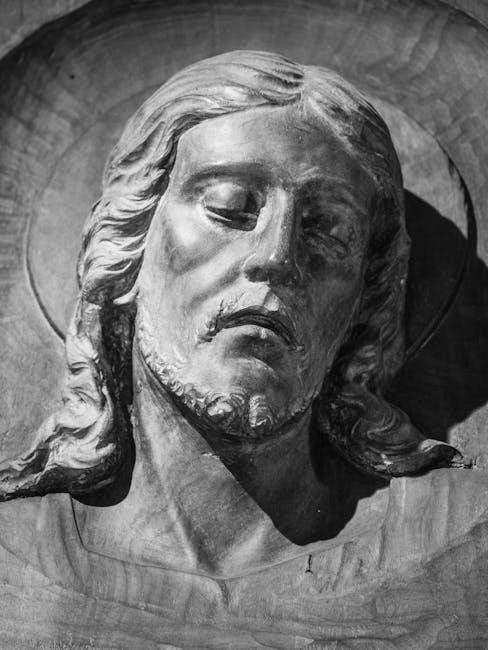
Musical Elements of the Messiah
Handel’s Messiah showcases grand orchestration, powerful choral arrangements, and emotive arias, blending Baroque techniques with spiritual depth․ Its innovative use of trumpets and drums enhances the dramatic impact, while the Hallelujah Chorus remains a climactic highlight, symbolizing divine glory and redemption through Christ’s reign․ The score’s complexity and harmony continue to inspire musicians and audiences, making it a cornerstone of classical music․ The availability of the Messiah PDF allows for in-depth study of its musical brilliance and enduring influence․
4․1 Orchestration and Instrumentation
Handel’s Messiah features a rich orchestration blending strings, woodwinds, brass, and percussion․ The strings provide harmonic depth, while oboes and flutes add tonal color․ Trumpets and drums, notably introduced in the “Hallelujah Chorus,” create a majestic sound․ Handel’s instrumentation emphasizes dramatic contrasts, enhancing the emotional impact of the text․ The score’s tessitura is carefully crafted to suit each instrument’s range, ensuring balance and clarity․ The Messiah PDF reveals intricate details of Handel’s orchestration, offering insights into his compositional genius and the work’s enduring appeal․
4․2 Choral and Solo Vocal Arrangements
Handel’s Messiah masterfully combines choral and solo vocal arrangements, creating a dynamic interplay between collective and individual expression․ The chorus delivers powerful, emotive renditions of scriptural texts, while soloists interpret arias like “Rejoice Greatly” and “He Shall Feed His Flock” with lyrical precision․ The vocal score in the Messiah PDF highlights Handel’s careful balancing of voices and instruments, ensuring clarity and dramatic impact․ Soloists often transition seamlessly into choral sections, maintaining the work’s cohesive narrative flow․ This integration of choral and solo elements underscores the oratorio’s spiritual and artistic depth, making it a timeless masterpiece of vocal composition․
4․3 Notable Arias and Choruses
Handel’s Messiah is renowned for its iconic arias and choruses, each a testament to his compositional genius․ The aria “Rejoice Greatly, O Daughter of Zion” showcases a soprano’s vocal agility, while “He Shall Feed His Flock” offers a tender, pastoral contrast․ Choruses like the Hallelujah Chorus and “For Unto Us a Child Is Born” are celebrated for their grandeur and spiritual depth․ These pieces, widely available in the Messiah PDF, highlight Handel’s ability to blend intricate orchestration with profound emotional expression, ensuring the work’s enduring appeal in classical and sacred music traditions․

Cultural and Religious Significance
Handel’s Messiah is a cornerstone of Western classical music, deeply rooted in Christian theology․ Its performances during Christmas and Easter symbolize community, faith, and timeless spiritual connection․
5․1 The Messiah as a Christmas Tradition
Handel’s Messiah has become an integral part of Christmas celebrations, particularly in Anglo-Saxon countries․ Its performances during the holiday season evoke a deep sense of spiritual reflection and communal joy․ The oratorio’s narrative, tracing the life of Jesus Christ, resonates strongly with the themes of birth, redemption, and hope․ Many choirs and orchestras worldwide perform the Messiah as a festive tradition, with the iconic “Hallelujah Chorus” being a highlight․ The availability of the Messiah PDF score has further facilitated its widespread performance, ensuring its timeless appeal and cultural significance during Christmas․
5․2 The Messiah in Easter Celebrations
While often associated with Christmas, Handel’s Messiah also holds significant relevance during Easter, particularly through its themes of resurrection and redemption․ The oratorio’s third part, focusing on the resurrection of Jesus, aligns with Easter’s central message of hope and renewal․ Many choirs and congregations incorporate Messiah performances into Easter celebrations, emphasizing its spiritual depth․ The availability of the Messiah PDF score has made it accessible for Easter-themed performances and studies, allowing communities to connect with its powerful narrative during this sacred period․ This tradition underscores the timeless appeal of Handel’s masterpiece beyond its Christmas associations․
5․3 Religious Themes and Symbolism
Handel’s Messiah is deeply rooted in religious themes, drawing from biblical prophecies and narratives․ The libretto, compiled by Charles Jennens, weaves together Old and New Testament scriptures to depict the Messiah’s arrival, life, crucifixion, and resurrection․ Symbolism abounds, with musical motifs representing divine presence, such as the Hallelujah Chorus signifying celestial rejoicing․ The Messiah PDF score highlights these elements, offering insights into Handel’s use of orchestration and choral arrangements to convey spiritual messages․ This blend of theology and artistry makes the Messiah a profound expression of faith, resonating with audiences seeking both musical and spiritual enrichment․
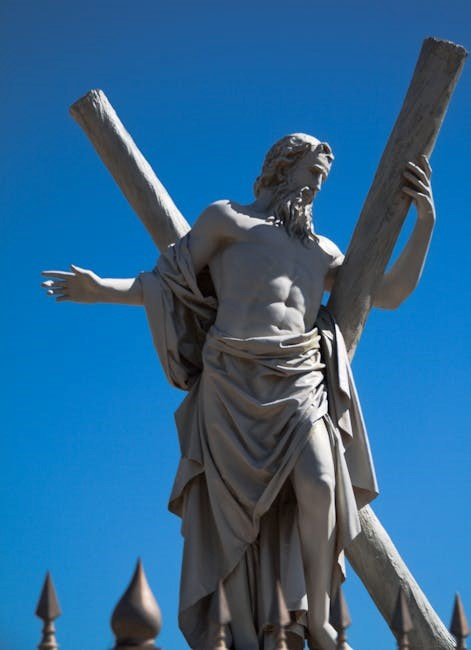
Performance and Interpretation
Handel’s Messiah premiered in Dublin in 1742, evolving into a global phenomenon with diverse interpretations․ The Messiah PDF score enables detailed study, preserving its timeless musical and spiritual essence․

6․1 Historical Performances and Recordings
Handel’s Messiah has a rich history of performances and recordings․ The first premiere in 1742 in Dublin was a modest success, but subsequent performances in London solidified its reputation․ Over the centuries, the oratorio has been recorded by renowned conductors like Sir Adrian Boult and Laurence Cummings, preserving its legacy․ The availability of the Messiah PDF score online has allowed modern musicians to study and perform the work with historical accuracy․ These recordings and scores provide a bridge between the past and present, ensuring that Handel’s masterpiece continues to inspire future generations of musicians and audiences alike․
6․2 Modern Interpretations and Arrangements
Modern interpretations of Handel’s Messiah have breathed new life into the timeless oratorio․ Conductors and ensembles frequently experiment with innovative arrangements, blending traditional orchestration with contemporary styles․ The availability of the Messiah PDF score has enabled musicians to adapt the work creatively, from chamber ensemble versions to large-scale symphonic performances․ Community sing-along events and workshops have also become popular, fostering participation and appreciation․ These modern approaches ensure that Handel’s masterpiece remains relevant, connecting with diverse audiences while preserving its spiritual and musical essence․ The adaptability of the score, as seen in various PDF arrangements, highlights its enduring appeal in today’s musical landscape․
6․3 Famous Conductors and Their Approaches
Famous conductors have left an indelible mark on Handel’s Messiah through their unique interpretations․ Sir Adrian Boult and Laurence Cummings are among those who have brought distinctive styles to the oratorio․ Boult’s traditional approach emphasized grandeur and precision, while Cummings often incorporates period instruments for historical authenticity․ Their performances, documented in recordings and PDF scores, offer insights into varied artistic visions․ These conductors’ contributions highlight the versatility of Handel’s masterpiece, ensuring its relevance across generations․ Their work inspires both musicians and audiences, fostering a deeper appreciation for the Messiah’s enduring musical and spiritual significance․

The Messiah in PDF Format
Handel’s Messiah is widely available in PDF format, offering complete scores and vocal arrangements․ Free downloads can be found on platforms like the Internet Archive and others, facilitating study and performance․
7․1 Availability of the Messiah Score in PDF
The Messiah score in PDF format is widely accessible online, offering both full and vocal scores for study and performance․ Platforms like the Internet Archive provide free downloads of the complete oratorio, while sites such as editions-nicolas-sceaux․fr offer typeset versions using LilyPond․ These PDFs are ideal for musicians, conductors, and scholars, enabling detailed analysis of Handel’s composition․ Many versions are free to download, distribute, and modify under Creative Commons licenses, making the Messiah accessible to a global audience․ This digital availability ensures the timeless masterpiece remains a vital resource for musical education and appreciation․
7․2 Sources for Downloading the Messiah PDF
Premium sources like the Internet Archive offer free Messiah PDF downloads, including complete scores and vocal arrangements․ The Center for Computer Assisted Research in the Humanities provides detailed full and vocal scores․ Websites such as Editions Nicolas Sceaux share typeset PDFs under Creative Commons licenses․ Additionally, platforms like Sheet Music Plus and Musicnotes offer downloadable scores and arrangements․ These sources cater to musicians, scholars, and enthusiasts, ensuring easy access to Handel’s masterpiece for study and performance․
7․3 Legal and Ethical Considerations
Accessing the Messiah PDF requires adherence to copyright laws․ Many sources offer the score under Creative Commons licenses, allowing free use with proper attribution․ However, some editions may remain under copyright, requiring purchase or permission for use․ Ethically, users should respect these rights, ensuring fair use and supporting creators․ Platforms like the Internet Archive provide public domain versions, while commercial sites like Sheet Music Plus offer legal downloads, promoting both accessibility and compliance with intellectual property laws․

Educational Resources
Educational resources for Handel’s Messiah include study guides, sheet music, and scores in PDF format, enabling in-depth analysis and learning for music students and educators․
8․1 Study Guides and Analysis
Study guides and analysis for Handel’s Messiah provide in-depth insights into its composition, historical context, and musical structure․ These resources, often available in PDF format, include detailed breakdowns of key sections like the Hallelujah Chorus and He Shall Feed His Flock․ They offer commentary on Handel’s use of biblical texts and his innovative orchestration techniques․ Many guides also explore the cultural and religious significance of the work, making them invaluable for music students and scholars․ Additionally, analysis tools help learners appreciate the nuances of the score, fostering a deeper understanding of this timeless masterpiece․
8․2 Sheet Music and Scores for Study
Sheet music and scores for Handel’s Messiah are widely available in PDF format, enabling detailed study and performance preparation․ These resources include full scores, vocal scores, and instrumental parts, providing a comprehensive understanding of the oratorio․ Many websites, such as the International Music Score Library Project (IMSLP), offer free access to downloadable scores, allowing musicians and scholars to analyze Handel’s masterful composition․ These materials are invaluable for educational purposes, offering insights into the work’s structure, harmonies, and orchestration․ Students and performers can use these scores to explore the nuances of Handel’s techniques and the historical context of the piece, fostering a deeper appreciation of its musical and cultural significance․
8․3 Educational Performances and Workshops
Educational performances and workshops focusing on Handel’s Messiah provide immersive learning experiences, often utilizing the Messiah PDF score for in-depth analysis․ These events cater to students, musicians, and enthusiasts, offering insights into the oratorio’s composition, historical context, and performance practices․ Workshops frequently include rehearsals, lectures, and interactive sessions, where participants can explore Handel’s techniques and the libretto’s biblical origins․ Many institutions and organizations host these programs, fostering a deeper understanding and appreciation of the piece․ Such initiatives not only preserve the legacy of Messiah but also inspire new generations to engage with this timeless masterpiece, blending education with artistic collaboration and community engagement․
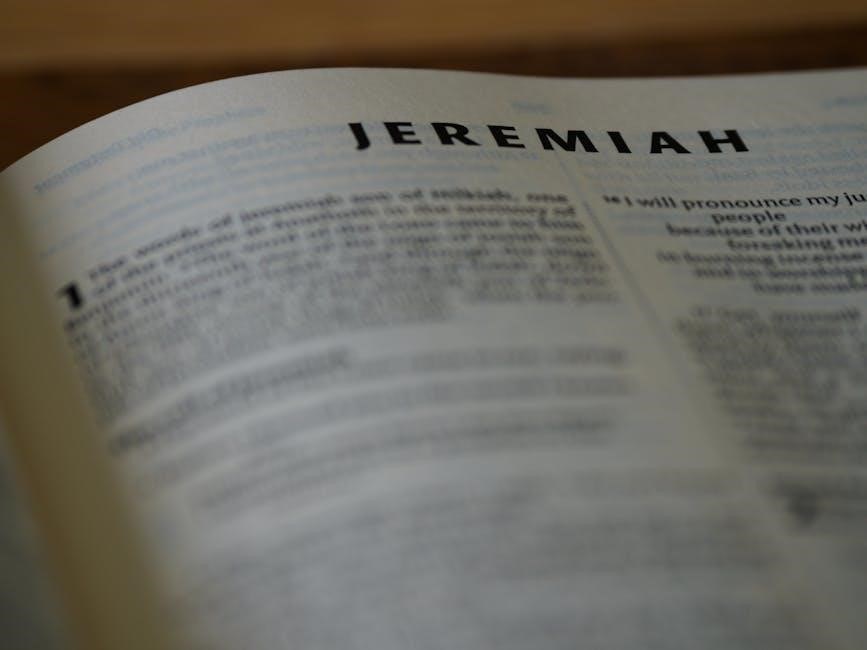
Community and Participation
Handel’s Messiah fosters community through participatory performances, with the Messiah PDF enabling widespread access to the score․ Amateur choirs and enthusiasts worldwide engage in sing-alongs and workshops, celebrating its universal appeal and spiritual significance․
9․1 Amateur and Community Performances
Amateur and community performances of Handel’s Messiah are a vibrant tradition, fostering unity and cultural enrichment․ The availability of the Messiah PDF score has democratized access, allowing church choirs, schools, and local ensembles to perform this masterpiece․ These events often serve as a platform for aspiring musicians to gain experience and connect with their communities․ The inclusive nature of such performances reflects the universal appeal of Handel’s work, making it a cornerstone of communal musical expression․ This grassroots engagement ensures the Messiah’s enduring legacy beyond professional stages, highlighting its power to inspire and unite people across generations and backgrounds through music․
9․2 Sing-along Messiah Events
Sing-along Messiah events are a beloved tradition, inviting audiences to participate in Handel’s iconic oratorio․ These events often feature the Messiah PDF score, distributed to attendees, allowing everyone to join in choruses like the Hallelujah Chorus․ Conductors guide the crowd through the music, creating a shared, immersive experience․ These gatherings are particularly popular during the holiday season, fostering a sense of community and connection․ Sing-alongs democratize classical music, making it accessible to all, regardless of professional training․ They also serve as a celebration of Handel’s timeless masterpiece, ensuring its relevance and joy for future generations through active participation and collective enthusiasm․
9․3 The Messiah in Worship Services
The Messiah is deeply integrated into worship services, particularly during Christmas and Easter․ Churches often incorporate Handel’s iconic oratorio to reflect on spiritual themes, with the Messiah PDF score serving as a vital resource for choirs and congregations․ The Hallelujah Chorus and other movements are frequently performed, creating moments of profound worship․ Many religious leaders highlight the oratorio’s ability to convey the life, death, and resurrection of Jesus Christ․ The availability of the Messiah in PDF format has made it accessible for churches worldwide, enabling participation and enriching liturgical celebrations․ This timeless work continues to inspire faith and unity in worship settings globally․
Handel’s Messiah remains a timeless masterpiece, its PDF score a testament to its enduring legacy․ Its cultural and religious impact continues to inspire and unite audiences worldwide․
10․1 The Enduring Legacy of the Messiah
Handel’s Messiah stands as a timeless masterpiece, its legacy enduring for centuries․ Its profound spiritual journey, from prophecy to redemption, resonates universally․ The oratorio’s cultural impact is immense, with performances worldwide, especially during Christmas and Easter․ The availability of the Messiah in PDF formats has democratized access, enabling study and appreciation by musicians and enthusiasts alike․ Its score, a testament to Handel’s genius, continues to inspire new generations, ensuring the work’s relevance and appeal․ The Messiah remains a cornerstone of classical music, bridging the past and present with its eternal message of hope and redemption․
10․2 The Messiah as a Timeless Work
Handel’s Messiah transcends time, captivating audiences with its universal themes and emotional depth․ Composed in 1741, its relevance endures, making it a staple in classical music repertoire․ The oratorio’s ability to blend the sacred and the theatrical ensures its appeal across generations․ As a timeless work, it continues to inspire modern adaptations and interpretations while maintaining its original grandeur․ The availability of the Messiah in PDF format has further cemented its place in musical history, allowing scholars and performers to explore its nuances․ Its enduring popularity is a testament to Handel’s genius and the work’s profound spiritual resonance․
10․3 Final Thoughts on the Messiah PDF
The Messiah PDF remains an invaluable resource for musicians, scholars, and enthusiasts, offering unparalleled access to Handel’s masterpiece․ Its widespread availability ensures that the oratorio’s legacy endures, fostering both academic study and artistic inspiration․ The Messiah PDF not only preserves the integrity of the original score but also democratizes access, enabling global performances and interpretations․ As a cultural treasure, it continues to unite people through its timeless music and spiritual message, solidifying its place in the repertoire of classical music․ The Messiah PDF is a testament to the enduring power of Handel’s creation, transcending boundaries and generations alike․